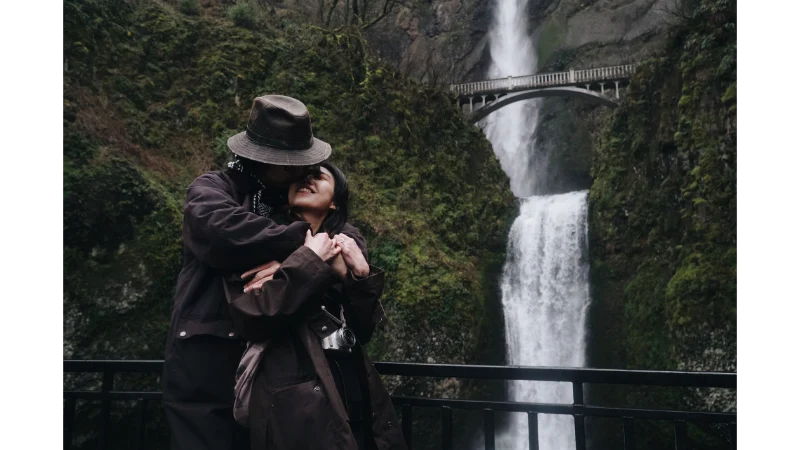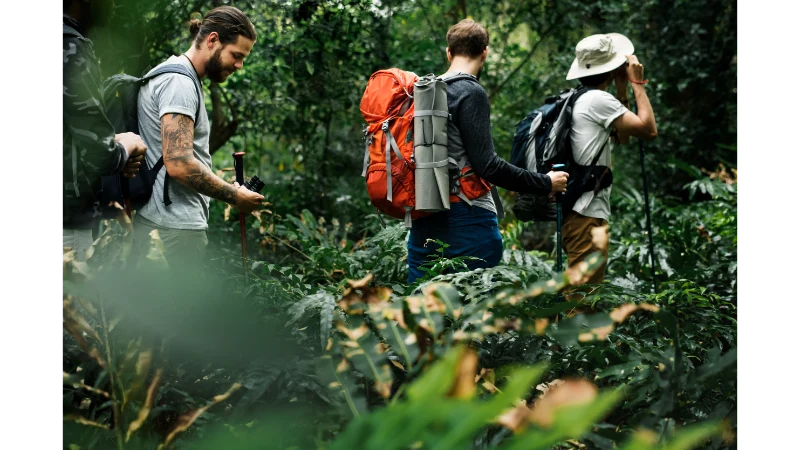Trekking in Sikkim isn’t just about exploring the stunning natural beauty of the Himalayas. For many, it’s a deeply spiritual journey, intertwined with rich cultural heritage and sacred sites that have stood for centuries. Sikkim, located in the northeastern part of India, offers not just rugged trails but a glimpse into the spiritual heart of the region. Whether you’re a seasoned trekker or a spiritual seeker, the trails of Sikkim promise an experience that transcends the physical, leading you through divine landscapes and sacred sites.
The Spiritual Essence of Sikkim
Sikkim, with its serene monasteries, ancient temples, and the towering Kanchenjunga, holds a sacred space in the hearts of its people. The people of Sikkim have long revered their natural surroundings as manifestations of divine energy. The state is home to a diverse blend of Buddhist, Hindu, and indigenous beliefs, which create a harmonious coexistence between nature and spirituality.
One of the most striking features of trekking in Sikkim is the constant presence of sacred symbols, like prayer flags fluttering in the wind, chortens (stupas), and monasteries perched on mountain ridges. These sacred sites provide trekkers with moments of reflection and connection with the spiritual energy of the land.
Popular Pilgrimage Trekking Routes
Several trekking routes in Sikkim combine adventure with spiritual experiences, taking trekkers to some of the most revered pilgrimage sites in the region.
1. Gurudongmar Lake Trek
One of the most spiritually significant treks in Sikkim, the Gurudongmar Lake trek is a spiritual pilgrimage as well as a physical challenge. Located at an altitude of 17,800 feet, Gurudongmar Lake is sacred to both Buddhists and Hindus. The lake, surrounded by snow-capped mountains, is believed to have been blessed by Guru Padmasambhava, the founder of Tibetan Buddhism. Locals consider the lake to be a source of spiritual healing, and it’s said that a visit here will cleanse one’s sins.
The trek to Gurudongmar Lake involves walking through some of the most rugged and barren terrains in Sikkim, offering trekkers a sense of being close to the divine, where nature and spirituality blend seamlessly.
2. Yuksom to Dzongri Trek
Yuksom, the starting point of this trek, is another significant religious hub in Sikkim. As the first capital of the Kingdom of Sikkim, Yuksom is home to the Dubdi Monastery, one of the oldest in the region. The trek to Dzongri takes you through dense forests of rhododendron and pine, crossing streams and open meadows. At Dzongri, trekkers can take a moment to reflect and pray while soaking in panoramic views of the Kanchenjunga, which holds great religious significance in the local Buddhist culture.
The Yuksom to Dzongri trek is not only an adventure into the wilderness but a spiritual sojourn where you connect with the sacred landscapes of Sikkim.
3. Khangchendzonga National Park Trek
The Khangchendzonga National Park trek is one of the most challenging and rewarding treks in Sikkim, both physically and spiritually. The park, which is a UNESCO World Heritage Site, is home to the Khangchendzonga mountain, the third-highest peak in the world and a sacred site for Buddhists. The trek passes through pristine forests, alpine meadows, and past crystal-clear lakes, where trekkers can stop to meditate and reflect in the presence of the mighty mountain.
This trek allows trekkers to immerse themselves in the mysticism and spirituality of the region. The journey is deeply connected with the reverence for the mountain, which is considered the abode of the deity, Kanchenjunga.
The Role of Monasteries and Chortens in Pilgrimage Treks
As you venture into the high-altitude regions of Sikkim, you’ll notice monasteries and chortens scattered along the trekking routes. These sacred sites are integral to the spiritual experience of trekking in Sikkim.
Monasteries like the Rumtek Monastery, Tashiding Monastery, and Pemayangtse Monastery are not just places of worship but also offer trekkers a glimpse into the spiritual life of the region. The monks here, with their rituals and chants, create an atmosphere of peace and serenity, inviting trekkers to pause and contemplate their journey.
Chortens, or stupas, dot the trekking routes, and each one is a representation of the cycle of life, death, and rebirth. These sacred structures are believed to house relics of Buddhist masters and offer protection and blessings to those who pass by.
The Healing Power of Nature
Sikkim’s landscapes are not just visually stunning but have a profound healing energy that brings peace to the mind and soul. The combination of pristine nature, high-altitude lakes, dense forests, and the constant presence of sacred symbols creates an environment that invites introspection and spiritual healing.
The gentle flow of rivers, the rustling of prayer flags, the sight of towering peaks, and the peaceful ambiance of the monasteries provide trekkers with an experience that goes beyond physical exertion. Each step taken on these trails offers an opportunity for self-reflection, personal growth, and spiritual rejuvenation.
A Trekking Experience for the Soul
Trekking in Sikkim isn’t just about conquering the mountains; it’s about the journey within. The trek becomes a pilgrimage—a journey that allows you to explore not only the natural beauty of the region but also the sacredness embedded in its landscapes. Whether you are seeking peace, spiritual solace, or just a deeper connection with nature, Sikkim offers the perfect setting.
For those seeking more than just adventure, trekking in Sikkim presents an opportunity to reconnect with the self and experience the divine presence that exists in every corner of this enchanting land.
Embark on a pilgrimage to Sikkim, and you’ll return not only with unforgettable memories of spectacular landscapes but also with a sense of spiritual fulfillment that lasts long after your trek has ended. My site.


